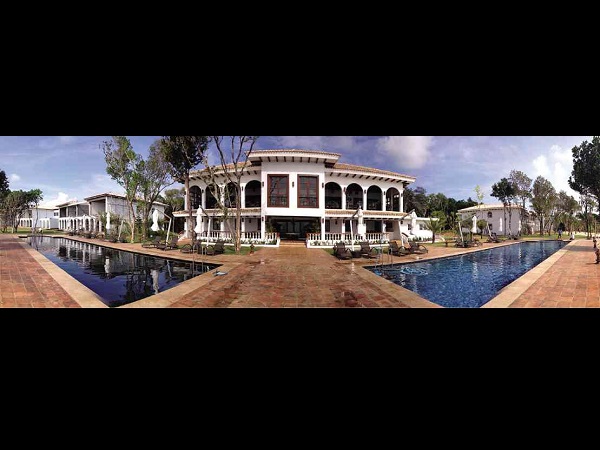What’s new in paradise? The Alphaland Balesin Island Club has changed a lot since I was there last January. Although only four months have passed, it seems so much has happened.
Balesin must be the country’s most expensive island property project developed by a single company. I heard that almost P4 billion has been spent on the island, and it really shows. Everything is first class, from the authentic Spanish plates adorning the walls of the newly opened Costa del Sol village to the exact shade of cobalt blue that puts a Grecian ambience to the Mykonos village.
As natural as possible
There are seven villages spread over the island’s 500 hectares, and yet the island seems so pristine. Indeed, developer Alphaland is only touching 10 percent of the entire island, leaving the rest as natural as possible.
The merry month of May has been the busiest so far, with more than 3,500 members and guests enjoying the different themed villages. The weekends are almost always chock-full, with so many flights using the 1.5-km-long concrete runway.
After the fully developed villages of Balesin—Phuket, Bali, Mykonos and St. Tropez, the latest add-on is Costa del Sol. The sala and its dining facilities were inaugurated last weekend with an assortment of Spanish tapas and more to serve members and guests.
Costa del Sol interior designer Monica Olbes is an expert in Spanish décor, having grown up in Spain. Her team is now hard at work to complete the 48 suites and villas in the six other buildings that comprise the Costa del Sol Village. These suites will be ready for occupancy in July.
The bar in Costa del Sol overlooks two swimming pools—one freshwater and the other saltwater. It’s a unique touch to complement the Spanish classical landscaping and dramatic lighting done by master artist Rico Sison.
Members have also been enjoying the three-month-old St. Tropez village, which is a hotel styled after the Hotel Byblos in southern France. St. Tropez has 52 suites, but my favorites are the two-room ones, with the master bedroom sporting a mirror over the bed. It’s a special design touch that only a naughty visionary could have put in.
Restaurants
Food is one of the main draws at St. Tropez. In addition to its two restaurants, another two—L’Escale and Le Neptune—are being added. Each of the dining facilities is designed like many French bistros in the real St. Tropez.
Actually when I think about it, food is one of the main draws of Balesin itself, what with seven villages and at least eight different cuisines I can think of. The eighth is Sakura, the Japanese restaurant run by the most entertaining Japanese chef in the country, Edo-san.
The last village to be opened is Toscana, and I suspect it will be the best. Developer Bobby Ongpin has a home in Tuscany and I am sure he is going to make this village reminiscent of his own castle on a lonely hilltop in middle Italy.
I’m told that one of Bobby’s biggest issues is that Tuscan cypress trees don’t seem to grow on the island. He found a way to get the Royal Palm trees in St. Tropez, so I eagerly await his solution to this problem
Like all huge development projects, it is sometimes the little details that provide most interest. I loved the only village where members cannot book a night’s stay—the Ifugao village. Alphaland brought a small posse of Ifugao wood carvers to Balesin, and these artists have carved everything from Balinese figurines to Thai buddhas – their abilities at furniture-making and woodwork are amazing.
I passed by the Ifugao village to admire the group’s work. Alphaland allows the villagers to run their own small store, where visitors can pick up or order some of their unique creations. Their carvings reflect what they have learned from the Asian villages they have helped decorate, and there is nothing more thrilling than buying a Balinese-style, hand-carved tree from the Ifugaos, and all at local prices.
Balesin is indeed a magical island. I just left and I can hardly wait to get back.
Visit www.tessaprietovaldes.com or follow @tessavaldes on Twitter.
